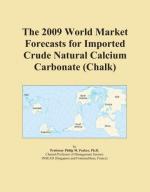|
This section contains 654 words (approx. 3 pages at 300 words per page) |

|
Overview
Calcium carbonate (KAL-see-um CAR-bun-ate) is one of the most common compounds on Earth, making up about 7 percent of Earth's crust. It occurs in a number of minerals and other natural materials, including aragonite, calcite, chalk, limestone, marble, marl, oyster shells, pearls, and travertine. Stalactites and stalagmites found in caves are made primarily of calcium carbonate. As indicated by the melting points of aragonite and calcite, the compound's physical properties may differ somewhat depending on its crystal form. It typically occurs as an odorless, tasteless white powder or colorless crystals.
Key Facts
Other Names:
Limestone; chalk; aragonite; calcite
Formula:
CaCO3
Elements:
Calcium, carbon, oxygen
Compound Type:
Inorganic salt
State:
Solid
Molecular Weight:
100.09 g/mol
Melting Point:
Calcite: 1330°C (2430°F); aragonite: decomposes at about 825°C (1520°F)
Boiling Point:
Not applicable
Solubility:
Very slightly soluble in water; soluble in dilute acids; insoluble in organic solvents
How It Is Made
|
This section contains 654 words (approx. 3 pages at 300 words per page) |

|


